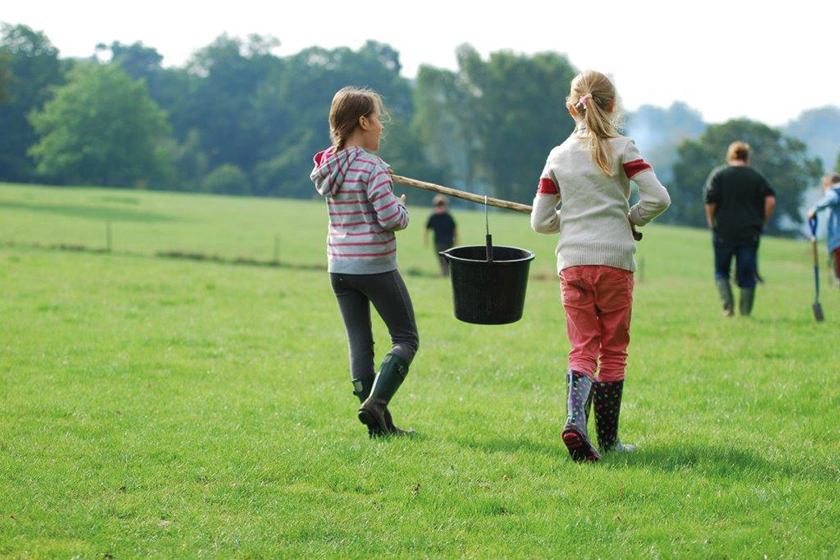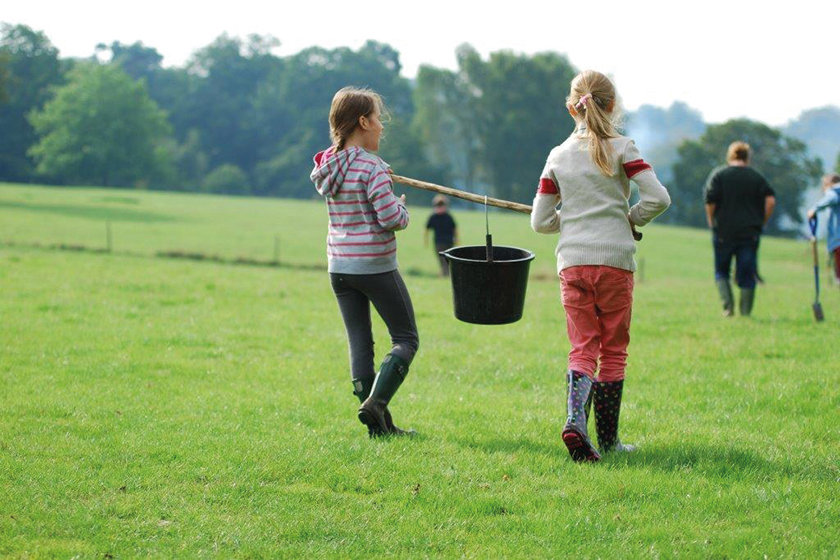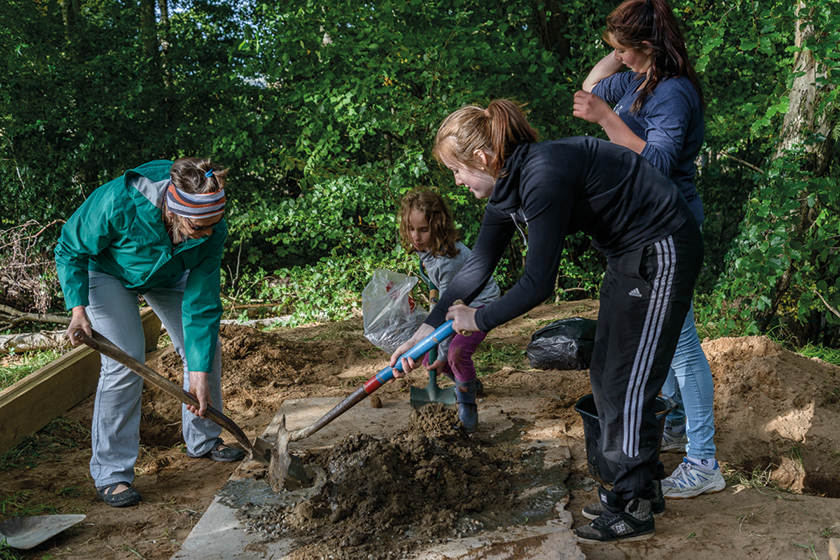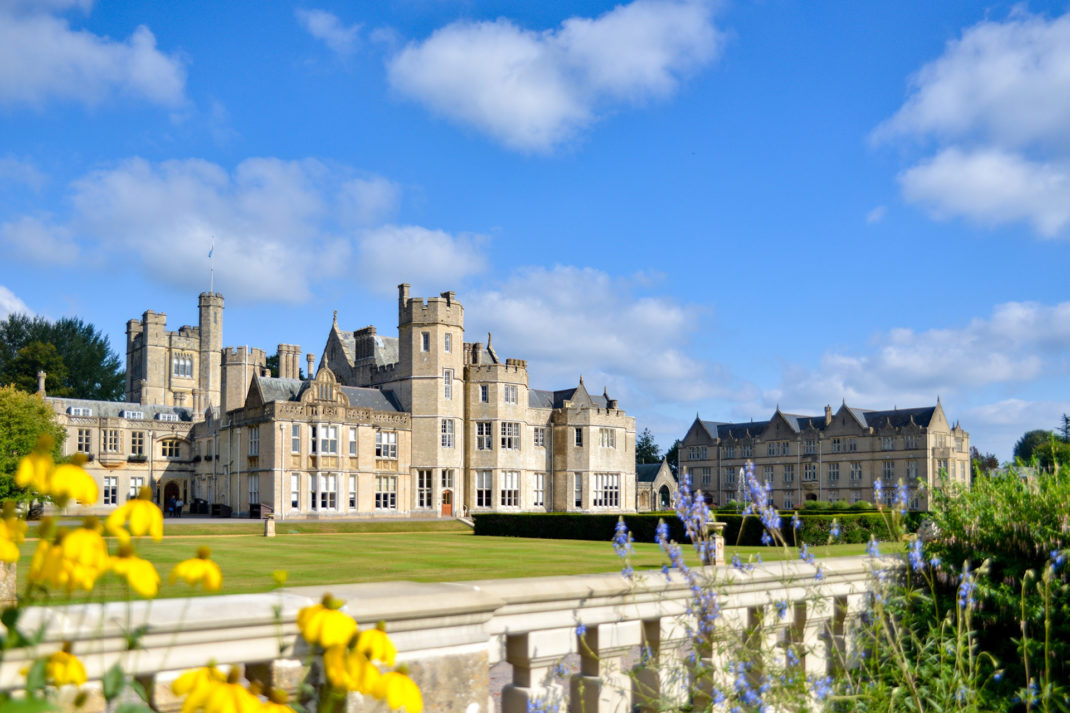Alternative Education: What are the Options?
By
8 years ago
Sally Jones questions the status quo of an exam-driven culture and asks whether there is another way to give your child a good start in life without compromising on the results?

Can a dose of alternative education provide the much-needed antidote to the growing pressures put on children? Steiner, Waldorf and Montessori schools take their turn in the spotlight.

Progressive education has a mixed reputation among parents. Particularly the ‘tiger mothers’ already dreaming of Oxbridge places for their pre-schoolers. It takes a bold parent to step off the treadmill and consider a different path. Those that do, however, are often pleasantly surprised.
The Steiner and Montessori methods are the principal alternatives to traditional schooling. The Austrian educationalist Rudolf Steiner developed his system in the early 20th century as a ‘gentle unfolding of childhood’. In his view, parents ought to:
‘Receive the child with reverence. Educate them with love. Send them forth in freedom.’
The 35 mostly small independent Steiner (or Steiner-Waldorf) schools in Britain and Ireland educate around 4,000 children. They are run on similar lines with a holistic approach that gives equal weight to the practical, the spiritual/emotional and the cerebral aspects of the child: ‘hands, heart and head’. The process is designed not to push the children beyond their capabilities but to get them physically and emotionally ready to learn. Reading and writing are only introduced at seven. A daunting prospect for competitive parents but the norm in countries like Sweden. Each year group still undertakes the prescribed, age-appropriate activities that Steiner originally formulated.
What is the Montessori method?
The Montessori method, introduced by Italy’s first female doctor Maria Montessori in 1907, is often wrongly confused with Steiner. Both are practised worldwide and involve similar reverence for childhood. Steiner’s structured day, however, contrasts with the child-led Montessori practice, reflecting the founder’s mission to place children ‘at the centre of society… and assist them in becoming the transforming elements leading to a harmonious and peaceful humanity’. Anyone can use the name Montessori, but parents are advised to check that so-called Montessori schools are accredited or employ trained Montessori teachers.
Many Steiner and Montessori schools focus strongly on the outdoors. Some are part of the growing Forest School movement, which originated in Scandinavia. This involves regular sessions by qualified practitioners, designed to develop confidence and self-esteem through hands-on learning in a woodland or natural environment.
In practice it appears more like regular nature study or outdoor activities than a coherent Steiner-style philosophy. Though it provides a welcome chance for increasingly sedentary, tech-driven youngsters to embrace the natural world. Loretto Junior School, Edinburgh, and Millfield Prep, Somerset, are among the independent schools making creative use of their sylvan surroundings.
What is alternative education like in practice?
According to one hyper-ambitious mum, Steiner Schools are ‘a bit like a cross between St Trinian’s and Lord of the Flies. Feral kids running wild, roasting each other over bonfires and semi-literate at 16’. Montessori pupils, she claims, are ‘totally undisciplined, daubing paint everywhere or skipping about being fairies like Fotherington-Thomas in Molesworth. It’s a nightmare vision for the pushy-posse of London socialites yearning for gracious quadrangles and spookily polite seven-year-olds in immaculate uniforms, chorusing Latin irregular verbs. However a visit to Michael Hall in Sussex, Britain’s longest-established Steiner School, founded in 1925, helps dispels such misconceptions.
A group of warmly dressed nine-year-olds add handfuls of horse manure to a spectacular ten-foot-long ‘muck dragon’. They have made it to sit beside their vegetable garden for the annual Michaelmas celebration. It commemorates the warrior Saint Michael slaying a dragon. Weeks later, the children revisit the beast and delightedly discover its nostrils smoking in the frosty air as the organic matter rots.
Tasked with making a jam sandwich from scratch, they hand-plough the earth then plant their own corn. This is eventually harvested and ground into flour at a nearby windmill. They make jam from fruit from the school’s orchard, milk cows at a local farm, then churn butter, before making dough and baking loaves in one of the school’s outdoor ovens. The children seem high-spirited but focused. There are no smartphones or distracted texting, few scuffles and a friendly atmosphere.
‘In June, the Class 9s [15-year-olds] always take on a building project to benefit the whole community and project-manage the whole thing,’ says Julie Ruse, a Michael Hall parent and PR officer. ‘Ours made a ship and monkey bars in the playground and loved doing something for the younger children. My son and his classmates helped repair a bread oven for the kindergarten and the little ones sweetly brought elderflower juice they’d made, to thank them.’
How do Steiner schools teach?
Until the age of 13, children at most Steiner schools have the same teacher. This builds a close rapport within the group. The day starts with songs and eurythmy, the Steiner-designed movement discipline to get children balanced and focused.
‘Our children have their main two-hour lesson in the morning,’ says Chris Triplett, Communications Manager of the influential Steiner Waldorf School, Kings Langley, ‘and focus on a particular subject for three to six weeks. Class 5 [11-year-olds] study Ancient India via related topics: history, English, geography, music and art. They learn Indian dances and cook Indian food. Teachers don’t use textbooks but write things on the board. Children create their own workbooks, writing and illustrating the pages, improving their language skills, writing and art.’

The curriculum embraces practical skills like gardening, cooking, knitting and woodwork for both sexes. At Drumduan Academy in Forres on the Moray Firth, groups of 15-year-olds hand-craft seaworthy wooden canoes, using marine architectural blueprints and whittling paddles from Douglas fir trunks. Actress Tilda Swinton, who went to West Heath and was a friend and classmate of Princess Diana’s, eschewed her own traditional education for her twins, Honor and Xavier, 19. She is passionate about the Steiner system and co-founded Drumduan to provide senior Steiner schooling, helping students to secure work placements including with a Forres sporran maker and a London tailor. Xavier, a would-be commercial pilot, worked at Inverness airport and flight school.
Alternative route to university
Most Steiner schools take children to 14 or 16 but both Kings Langley and Michael Hall go up to university level, with students sitting GCSEs and A-levels and going to universities including Oxbridge. Drumduan’s students graduate at 19 without taking exams, instead compiling portfolios on which their university applications are assessed.
‘This first graduating class of four students are our pioneers, testing the waters on university entrance,’ says Krzysztof Zajaczkowski, Drumduan’s Principal. ‘We try to create a broad horizon for our students by not herding them into one-track expectation but giving them a holistic, experiential education that prepares them for being 50 years old rather than for the exam desk. Some are going into media and performance, others to university courses in philosophy or medicine. We believe universities are jaded with the grade-based system. They want to see enthusiasm and passion.’
That being so and having met the engaging, confident youngsters at Drumduan, Kings Langley and Michael Hall – which, despite the ‘alternative’ tag, regularly garner outstanding inspection results for their pupils’ social, moral and cultural development – it does seem that parents in search of a gentler ethos and self-directed learning could not do better than visit a Steiner school on their rounds.
London Montessoris
In North London, a Montessori classroom appears as a random hive of activity, children buzzing from activity to activity: drawing, fitting exquisite wooden shapes together or showing the teacher their painting.
‘The teacher is an observer,’ says Jethryn Hall of the Maria Montessori Institute.
‘They know what each child is doing every moment and guide, rather than initiating, aware of when to show something new and move on. We have three-hour work slots. Children aren’t asked to put work away at certain times, so they can concentrate for long periods of time. Our mixed age groups help older children gain self-confidence, acting as role models to younger ones. My son summed it up when a friend from another school asked him, “Isn’t yours the school where you can do what you like?”. He replied, “No, we don’t do what we like, we like what we do.”
At The Gower School, in Islington, a popular Montessori taking children from nursery to age 11, the teacher sitting at the ‘peace table’ tells a contrite-looking five-year-old, ‘James is sad because you snatched his toy, Sarah.’ She hands the child a flower from the peace table. ‘I’m sorry James,’ says Sarah. ‘Next time I’m going to say “May I have a turn?”.’ The two smile and the quarrel is resolved.
‘We have a gentle, nurturing way of learning,’ says founder Emma Gowers. ‘You never hear a raised voice. We speak nicely to the children and they respond similarly. If someone is rude we say gently, “That’s not a very thoughtful way to behave.” If two children fall out they come to the peace table in each classroom and when they hold the peace flower, it’s their turn to talk. They realise each has a different point of view.’
What the inspectors say
The Gower School looks utterly traditional with its purple uniform and polite, cheerful-looking youngsters. It was recently graded Excellent or Outstanding in every area by the ISI (Independent Schools Inspectorate) and the school’s sports teams win numerous trophies. What’s more, it sends children to good London day schools, from Henrietta Barnett and North London Collegiate to City of London and Westminster Under School.
‘Islington’s as pushy as you get,’ says Gowers. ‘One parent at my nursery asked which school would be best for getting their child into Harvard. When the play script comes out, some parents count up how many lines each child has got!’
We focus on making children secure and confident in small steps by building up a repertoire of activities with plenty of repetition. Children here work at their own pace and if they’re fast, they can leap ahead. We seem to collect gifted children. Some wouldn’t fit into other schools but do well here as do those with dyslexia who’ve struggled or been bullied elsewhere.’
The verdict
Numerous schools offer alternative education in Britain, from a few unnervingly New Age establishments, with shrubberies teeming with feral adolescents, to tiny Montessoris nurturing a handful of toddlers in a church hall. The top Steiner and Montessori schools, however, rival the best independents, with the Ofsted reports to prove it and quirky individuals thriving in an atmosphere of kindess and self-discovery. The parents, almost by definition tend to be a self-selecting, creative group: thoughtful young professionals and earnest free-thinkers, sprinkled with its own share of actors and rock stars.
For children feeling straitjacketed by convention, unwilling to live with the peer-pressures of ‘Generation Selfie’ and looking for kindred spirits, it’s an alternative that could just provide the answer.
READ MORE: Best Preps With Forest Schools/ How to Choose the Right Boarding Prep



